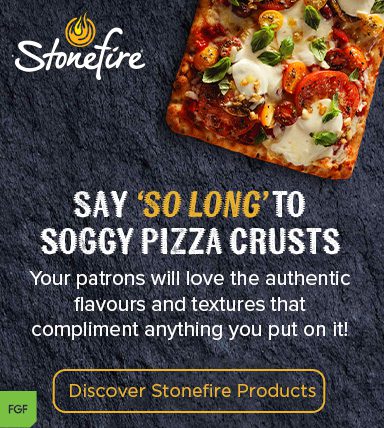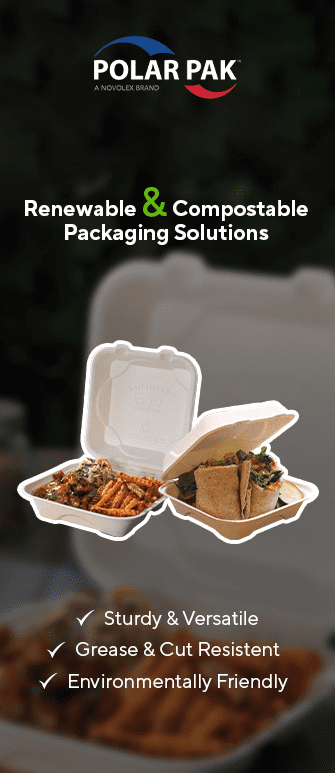Should your restaurant be active on social media? Absolutely. Is it important also to have a website and mailing list? Even more so.
Why? Basing your marketing plan on social media alone is akin to renting without a lease. Websites and mailing lists, however, offer the control that comes with ownership.
Why you need a website and mailing list for your restaurant
Websites offer restaurants many benefits. Jenny Companion, VP eastern operations, and Nathalie Kent, communications coordinator, of hospitality consulting agency The Fifteen Group say, “Having a proprietary website provides more freedom to tell the story of your restaurant, control the narrative, share all pertinent information and maintain a certain look and feel. You can share your full menu in a large format […], offer easy access to make reservations or contact your team, share maps, and more.”
“Having a proprietary website provides more freedom to tell the story of your restaurant.”
Jenny Companion, VP eastern operations, The Fifteen Group
Nathalie Kent, communications coordinator, The Fifteen Group
Your mailing list is your most valuable digital commodity because it consolidates contact information for people who interact with you in many places.
Companion and Kent say, “Building a mailing list is also beneficial as it affords restaurants more direct communication with their guests. Rather than posting a restaurant LTO or promotion on Instagram and hoping it gets seen, they can send a newsletter directly to their target audience’s inbox.”
“Building a mailing list is beneficial as it affords restaurants more direct communication with their guests.”
Jenny Companion, VP eastern operations, The Fifteen Group
Nathalie Kent, communications coordinator, The Fifteen Group

Why social media alone for your restaurant isn’t enough
Your community expects to find you on at least one or two social media platforms. This allows you to promote your brand and engage with followers. But each platform has both content and functional limitations.
Be mindful that what you build on any third-party platform like Instagram, Facebook or TikTok is somewhat precarious. Changing algorithms can limit who sees your posts, services can be converted from free to paid, and sometimes platforms even shut down (goodbye, Google+).
Each social media platform has both content and functional limitations.
For Facebook Pages, which businesses use, ongoing algorithm changes favour paid posts over organic reach, meaning your posts appear less frequently in your followers’ feeds. If you have a Facebook page, no doubt you receive frequent nudges to “boost” your posts — for an advertising fee, of course.
On Instagram, posts used to appear in reverse chronological order. If you posted an enticing photo of your lunch special at 9 a.m., followers who used the app that morning most likely would have seen it. Now, the rules that dictate how your posts rank in followers’ feeds are far more complex, including factors like followers’ behaviour (e.g., the types of posts they engage with), the interactions between you and them, timing and more. It’s complicated.
You might not like it, but there’s nothing wrong with social media platforms changing the rules when they please. After all, they offer their services for free, but not out of altruism. They’re businesses prioritizing their interests.
Again, just like renting that great space without a lease, basing your restaurant’s marketing plan entirely on social media doesn’t offer a lot of security.
The power of website ownership
Apart from the content, marketing, and operational benefits of having a great website, it’s yours to control. If you want to change up the design or integrate new functionality like a mailing list service, well, you’re in charge.
You own your domain name (like www[dot]bestrestaurant[dot]ca) and choose the platform to build your website on. By using a hosted website, you can focus on functionality, content, and SEO (strategies to help search engines display your site to would-be visitors) while your provider handles the nuts and bolts (think fun stuff like updates, security, backups, etc.). One website platform is Sociavore, which was developed for independent restaurants.
Yes, you’ll need to pay for your domain name (URL) and platform fees, while your social channels are free. But you won’t be at the mercy of social media’s frequently changing rules and players, and visitors to your site will find everything they need in one place.
Making the most of an email list
Congratulations if you have scores of followers on social media, but do you know how to contact them outside the platform? Visits to your website may be booming, but do you know who those visitors are?
Creating a mailing list allows you to make the most of traffic to your website, social channels and restaurant. It’s your master list of everyone who’s said they want hear from you.
No matter what happens to your social channels or website, your mailing list is there for you. It’s your most powerful marketing and relationship-building tool, allowing you to communicate directly with your subscribers. Build it with care and treat it like gold.
“Those who sign up for your mailing list are, by definition, already engaged with and invested in your brand, so you’ll be able to capitalize on an active and interested audience to drive business.”
Jenny Companion, VP eastern operations, The Fifteen Group
Nathalie Kent, communications coordinator, The Fifteen Group
As Companion and Kent say, “Those who sign up for your mailing list are, by definition, already engaged with and invested in your brand, so you’ll be able to capitalize on an active and interested audience to drive business.”
Seven tips to maximize your restaurant email list
- Offer multiple opportunities to subscribe — Put sign-up links on each social channel and your website, and provide paper forms and/or digital options on your premises. Always seek to expand your list.
- Offer incentives — It’s well worth providing special offers or promotions for people to join your mailing list.
- Personalize email — A little thing like using subscribers’ names in email goes a long way toward relationship building.
- Learn about subscribers’ interests — Polling subscribers about their interests means you can target content to them. Send the promo about your new meat lovers’ menu to the people who are happy to see it, not the vegan crowd.
- Don’t flood subscribers’ inboxes — If you send too many emails, they may tune you out or, worse yet, unsubscribe.
- Remember, consent is key — Spam may have a place on some menus, but it doesn’t belong in your mailings. Learn more about Canada’s anti-spam legislation.
- Use a mailing list service — You don’t have to manage your list alone. Services like MailChimp or Constant Contact support you in enrolling new subscribers, anti-spam compliance, sub-list creation, communication design, and analyzing impact.



